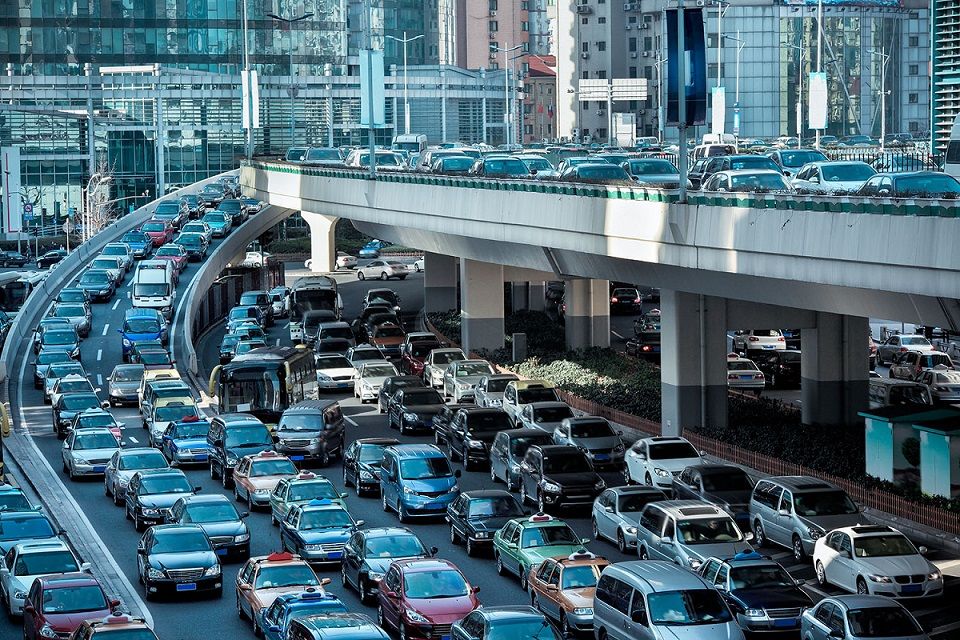How to kill traffic congestion, and save lives
How can we reduce the costs of infrastructure, traffic congestions, and traffic accidents, while simultaneously making public transport systems a more common, convenient and comfortable choice? Here’s how Intelligent Traffic Systems can make cities attractive and safe again.
Last year, commuters in Bogotá spent an average of almost two weeks stuck in traffic, while the drivers in Rome and Dublin lost 1.5 weeks for time-consuming traffic congestions. Too much chaotic traffic is a problem for almost every big city nowadays.

Another vital question regarding traffic is road safety. A status report on road safety from the World Health Organization (WHO) states that about 1.3 million people die on the world's roads and as many as 20-50 million are injured yearly. Road traffic injuries are the second biggest cause of death for all age groups, behind the total sum of various kinds of diseases in the first place, and for children and young adults age 5-29 years, it is the leading cause of death.
Besides road safety, traffic has another big issue by being a contributor to dangerous air pollution. According to WHO, air pollution kills an estimated 7 million people worldwide every year. From these, 4.2 million deaths are a result of exposure to ambient outdoor air pollution. In other words, air pollution is a major contributor to public health problems worldwide. The healthcare costs of congestion-related dirty air in Europe have been estimated to be around 79 billion dollars, a number that includes diagnosis and treatment of illness, lost productivity and investment in different types of public health initiatives.
Traffic congestions, road safety, and air pollution are all factors that play a role in how attractive a city is and how citizens perceive their quality of life.

How can Intelligent Transport System (ITS) help?
In the context of efficient cities and the costs to society, integrating ITS solutions and subsystems can make a great impact. This includes reducing traffic congestion, traffic accidents and air pollution, all of which cause high costs to society and poor quality of life.
Traffic signals play a significant role in how traffic works. Smart traffic lights calculate how long it takes between the crossings and traffic signals, and then customises the signal to make the traffic as streamlined and safe as possible. As certain types of traffic – such as buses, cyclists and emergency vehicles – can be prioritised, this also opens up the opportunity to favour some types of traffic over the others. Big cities with a lot of traffic congestion can favour public transport to make it more attractive for people to leave their cars at home.
Another way to handle the traffic is to create something called “green waves”, which is when a lot of traffic signals turn green directly one after the other. Besides minimising the standstill time, this can be a help in a traffic accident when emergency vehicles need to get through the traffic quickly. Signal improvement is beneficial for all parts of society, and for big cities it can be a crucial part in creating effective and attractive places where people can have a high quality of life.
Additionally, in cities, much of the congestion is caused by a lot of cars driving around just looking for parking spots. Studies show as much as 30 percent of the traffic in urban areas are vehicles on the hunt for available parking spots. ITS has a solution to this, called parking guidance solutions. With this technology, drivers can be shown to a parking spot way faster, which by extension improves the traffic capacity.
In the context of air pollution, the ability of the traffic to flow as smoothly as possible plays a part in the amount of fuel and CO2 emissions that are emitted. For example, the number of times vehicles stopping or accelerating strongly affects fuel consumption. Vehicles that are stuck in traffic consume 0.05 kg of extra fuel and emit an additional 0.15 kg of CO2 compared to those in a steady stream of traffic. Efficient traffic signals can reduce fuel consumption and CO2 emissions by 10-20 percent.
ITS is utilising the existing infrastructure without building new roads. Building new roads aren’t possible in most cities not only because of the lack of space, but as it is also proven to be an ineffective, short-term solution as new lanes fill up fast with more traffic.
The challenges with traffic congestion and dangerous emissions are a tough nut to crack but ITS solutions can help in getting the best out of our resources. It also gives authorities the tools to prioritise some type of traffic over the others and make public transport more attractive while simultaneously creating smoother flows in the existing traffic. That is what congested, and air polluted cities need all over the world.